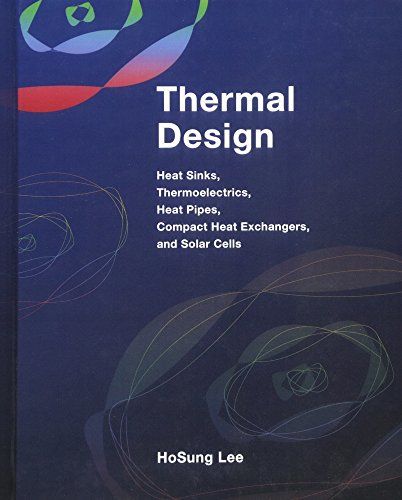The proposed is written as a senior undergraduate or the first-year graduate textbook,covering modern thermal devices such as heat sinks, thermoelectric generators and coolers, heat pipes, and heat exchangers as design components in larger systems. These devices are becoming increasingly important and fundamental in thermal design across such diverse areas as microelectronic cooling, green or thermal energy conversion, and thermal control and management in space, etc. However, there is no textbook available covering this range of topics. The proposed book may be used as a capstone design course after the fundamental courses such as thermodynamics, fluid mechanics, and heat transfer. The underlying concepts in this book cover the, 1) understanding of the physical mechanisms of the thermal devices with the essential formulas and detailed derivations, and 2) designing the thermal devices in conjunction with mathematical modeling, graphical optimization, and occasionally computational-fluid-dynamic (CFD) simulation. Important design examples are developed using the commercial software, MathCAD, which allows the students to easily reach the graphical solutions even with highly detailed processes. In other words, the design concept is embodied through the example problems. The graphical presentation generally provides designers or students with the rich and flexible solutions toward achieving the optimal design. A solutions manual will be provided.
Comments
Comments are disabled for this post.




Great Book for Thermal Design! I was in H.S. Lee’s Advanced Thermal Design course when I bought this book. It is one of the few books I kept from my undergrad. It pulls in a great amount of thermal design theory and explains examples very well. This is definitely a graduate level book and requires an understanding of basic thermal dynamics
Author was my Professor There are many topics covered within this book that have not been thoroughly researched elsewhere. Dr. Lee would often tell us that there wasn’t other formulas out there for many things to prove his work. This edition has many errors within it (for example, a primary equation used throughout an entire chapter is incorrect. He divided improperly to simplify and the resulting equation was erroneous and used throughout the chapter). Concepts are very interesting and with revisions it could be a…
Good theory, but bad for industry I bought this book because I needed to design a heat sink and had very tight constrains for the heatsink size. I followed the book and the solution manual for the problems, and they solution I arrived at turned out to be pretty ridiculous. If you are buying this book because of the heatsink section, I’d recommend you to save the money and just run some FEA instead. Do a flow simulation in order to estimate the average convection coefficient and then run a thermal analysis with that number.